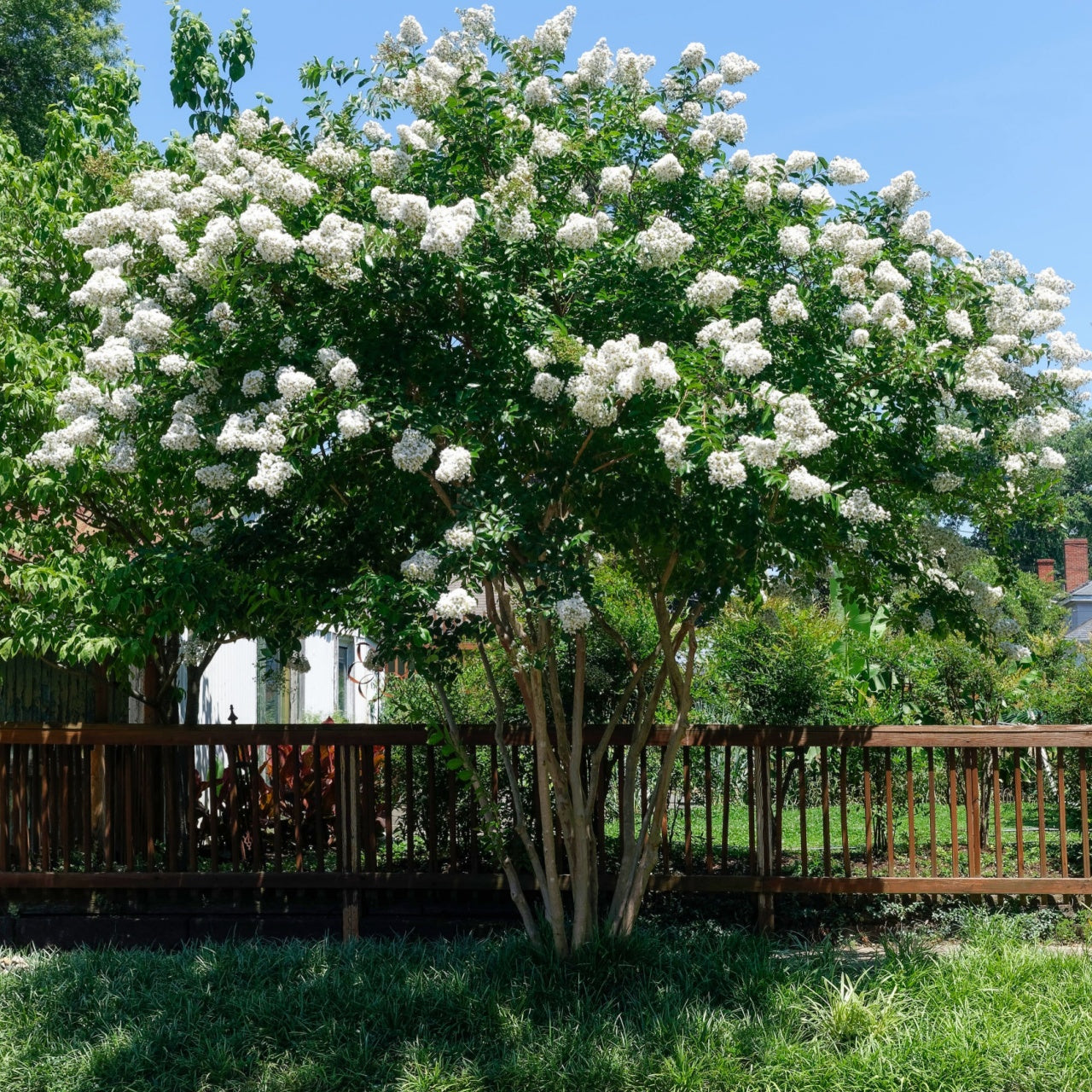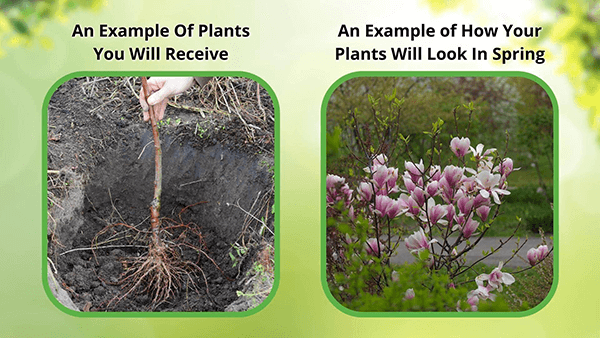Natchez Crepe Myrtle For Sale
The Natchez Crepe Myrtle is a highly ornamental deciduous tree that will brighten your landscape with its clouds of white flowers. It is a lovely deciduous tree with gorgeous, elegant white blooms and exfoliating bark. It is truly captivating and will turn heads! Use this tree as an accent or focal point in your yard or plant to create a stunning alley. As this tree is very fast-growing, you can use a few of these trees to create a living privacy screen or hedge. This will add great curb appeal to your home or landscape.
Plant Details - Natchez Crepe Myrtle (Lagerstroemia indica × fauriei 'Natchez')
Family: Lythraceae
Light Requirement: Full Sun
Water Needs: Moderate, prefers well-drained soil
Height: 20 - 30 ft.
Spread: 15 - 20 ft.
Growth Rate: Fast
Bloom Time: Mid to Late Summer
Flower Color: Pure White
Wildlife Value: Attracts bees, butterflies, and hummingbirds
Landscape Uses and Maintenance - Natchez Crepe Myrtle (Lagerstroemia indica × fauriei 'Natchez')
Natchez tree is prized for its long bloom season and graceful shape. Its large clusters of pure white flowers appear in mid-summer and can last up to three months, offering a bright contrast against its rich, glossy green foliage. In the fall, the foliage turns shades of orange and red, extending its beauty well into the cooler season.
Natchez Crepe Myrtle features attractive cinnamon-brown exfoliating bark, which provides visual interest year-round - even when not in bloom. It's disease-resistant, drought-tolerant, and low-maintenance, making it a favorite for homeowners and landscapers alike.
Noteworthy Characteristics of Natchez Crepe Myrtle
The Natchez Crepe Myrtle shines in all four seasons - stunning white blooms in summer, fiery foliage in fall, distinctive bark in winter, and lush greenery in spring. It's an ideal choice for privacy screens, focal points, or street plantings, thriving in full sun with minimal care.

Exposure
The Natchez Crepe Myrtle thrives in complete sun, needing at least six hours of natural daylight. This exposure promotes its vibrant blooms and healthy growth, making it an excellent choice for sunny garden spots.
Height at Maturity
Under 25 Feet
Usage
Flowering
Shipped As
Bare-root
Ships
UPS
Planting Zones
6-9




